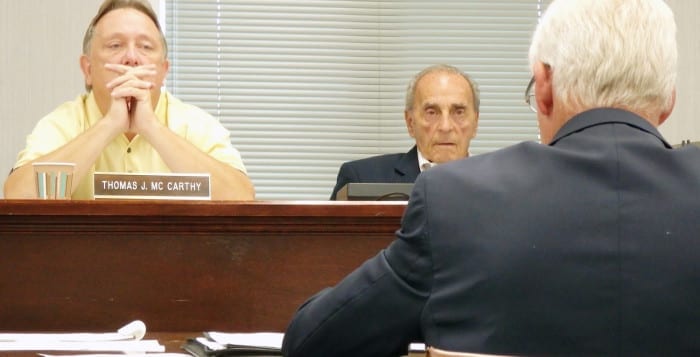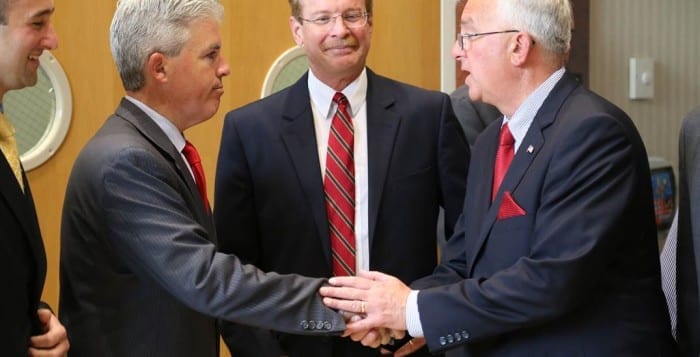Smithtown is tightening its belt, town Comptroller Donald Musgnug said at a town board meeting on Tuesday.
As per Supervisor Pat Vecchio’s (R) request, Musgnug provided the town with his overview on the town’s current financial performance through May 31, and said Smithtown needed to be selective with expenditures in order to remain sustainable going into 2016.
“The town board has done well to keep certain positions vacant or to delay appointments,” Musgnug said in his report to the board on Tuesday. “My recommendation is that we fill only essential positions, promote from within where possible and leave non-essential positions vacant. The message is that we must continue to contain what we can control — expenditures.”
The comptroller said it was still too early in the year to predict “with any kind of accuracy” the final results of town operations, but said Smithtown still needs to budget conservatively to ensure a stable financial ground next year.
Musgnug said the town was performing better than what was expected in this year’s budget, with one exception — the highway snow fund. A brutal winter was the only hindrance on the town’s otherwise on-track year in regards to the budget.
“Most departments are spending below what was anticipated, however certain revenues are out of our control, such as the mortgage recording tax, which is coming in less than anticipated,” Musgnug said. “Because of this and other factors, we will need to continue to tighten our belts so that we can bring the town’s operating results closer to breakeven in 2015.”
The comptroller also discussed the usage of Smithtown’s leftover fund balance to help balance budgets each year. He said the option was on the table, but not preferred, which Vecchio and Councilman Bob Creighton (R) agreed to.
Creighton said the town had been criticized in the past for doing such a practice, and Vecchio warned against it.
“Fund balances are a [double-edged] sword,” Vecchio said. “When you use it to balance the budget, you get accused by bonding companies.”
According to the comptroller, it was doubly important that Smithtown eyes its finances closely in the coming months because he anticipated the town would be going out for bonding later this year to fund certain projects.
The comptroller said he was not ruling out the possibility that rating agencies might lower the town’s bond rating in the coming year, but if it does happen, it would not be a significant drop.
“The rating agencies would like to see a structurally balanced budget,” he said. “As we approach the 2016 budget cycle, the closer we are to breakeven in 2015 means less adjustments for 2016.”
Town Councilwoman Lynne Nowick (R) asked Musgnug how significantly a lowered rating in September might affect interest for the town, to which the comptroller said it was difficult to call.
“It will impact interest, but it won’t be overwhelming,” he said. “If we do, it’ll be one score. But I don’t anticipate that happening.”






